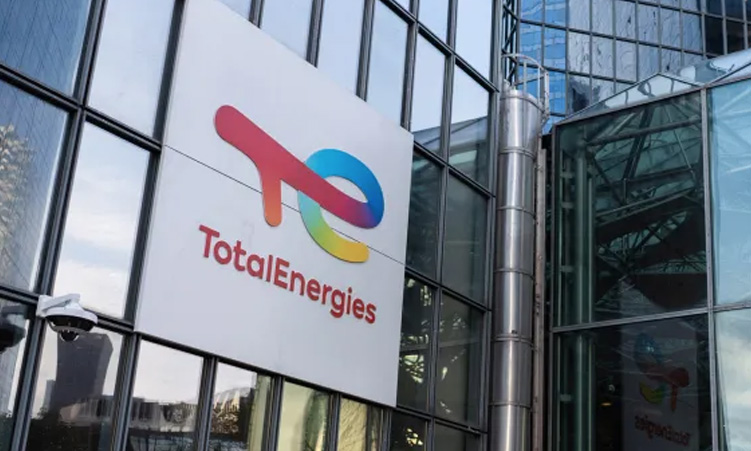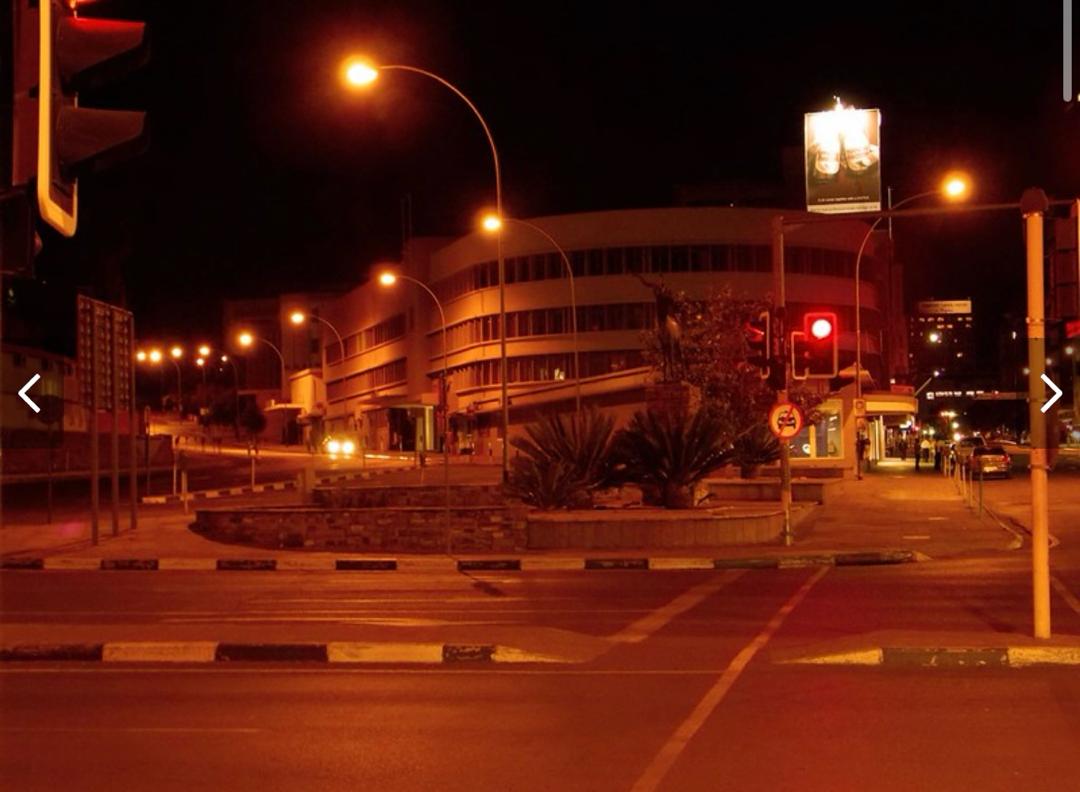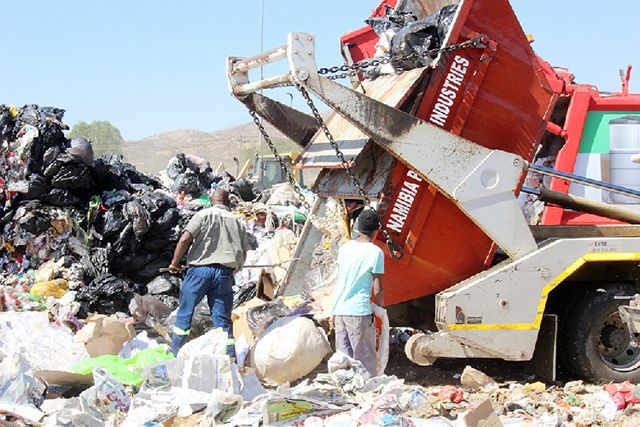From a business standpoint, monetisation is the process through which investor-acceptable revenues are generated. This appears to be where TotalEnergies’ Brulpadda and Luiperd gas projects failed. Nearly five and a half years after discovery, there was no visible path to revenues.
They say a week is a long time in politics. It can also be a long time in the life of an analyst.
Much of my career has been devoted to identifying the risks that businesses and governments must contend with in our hyperdynamic world. I pay a lot of special attention to events in South Africa, my home for over 25 years, and a country that is nowhere near fulfilling its enormous development potential.
Others and I in the advisory business have a role to play in putting the country on a strong and sustainable trajectory of economic growth. Like civil society activists or our brave journalists, our message can sometimes be hard to hear, not least where vested interests lie.
And so I learnt last week, in a phone call that I received from one of our better-known government ministers. Though this minister has a reputation for vigorously haranguing his critics, privately and publicly, I wanted to believe that we could find some common ground. It didn’t take long to realise that that was never going to happen.
Decline of mining industry
It all started with an op-ed that I co-wrote in this publication on the tragic decline of South Africa’s once-mighty mining industry. We saluted the significant progress made in transformation and ownership of the industry, community consultation and participation, labour wages and mine safety.
But we lamented the various policy failures and outdated dogmas that had pulled the sector down from the commanding heights of the global industry to a third-tier destination for mining investment. Much of this seemed to be manifest in the often-nativistic debates which followed Australian mining giant BHP’s failed takeover of once-all-conquering South African firm, Anglo American.
Our unambiguous aim in writing the piece was to highlight mining’s catalytic potential for (once again) boosting South Africa’s economy writ large and how key mining reforms could align South Africa much more strongly with the green transition globally. If only we were more open to new thinking, new ideas, maybe even new partners.
A few days after our article was published, the bombshell announcement came from the French oil and gas giant TotalEnergies that it was walking away from the Eastern Cape Brulpadda and Luiperd gas discoveries situated about 200km offshore along the Eastern Cape coast (officially designated Blocks 11B/12B).
This came shortly after its main project partner, the strategically important QatarEnergy (owned by the state of Qatar and previously known as Qatar Petroleum), had thrown in the towel. Another partner, CNR International, had also quit. This leaves South African consortium Africa Energy Corp as the sole remaining owner of the development licence.
The news made headlines well beyond South Africa, fanning like wildfire in the global, very close-knit oil and gas industry and its highly influential specialised press.
When I received a call from SABC television to discuss TotalEnergies’ decision, I welcomed the opportunity to share my analysis and perspective on a telling development for South Africa’s future energy mix. And, in my view, what amounted to a scathing verdict on government policy and leadership in this sector. One, critically, for which South Africa will pay a heavy economic and reputational price.
Niall Kramer, the previous CEO of the South African Oil and Gas Alliance, has repeatedly stated that the department in charge might as well have been the gas exploration promotion agency of Namibia (where a lot of investment is heading). His flippant view has now been vindicated.
TotalEnergies’ public release was customarily to the point. The company is renowned amongst the top-tier energy companies worldwide for having the sharpest, and often the toughest, negotiators in the business. But it’s also famously discreet: it simply said that it exited this project and an exploration project along the Western Cape coast.
The company appears to be staying the course with exploration in South Africa’s Orange River Basin, which runs offshore along the coast from the Northern Cape to southern Namibia. The discoveries TotalEnergies was exiting could not “be turned into a commercial development as it appeared to be too challenging to economically develop and monetise these gas discoveries for the South African market”, so said the company.
I had followed this potentially significant energy opportunity for South Africa closely since 2020. It was a crucial test of the country’s willingness and ability to commercially develop and produce oil and gas in one of the world’s most promising new frontiers – an imposing swath of discoveries and likely discoveries that stretches from southern Tanzania to southern Namibia and which may turn this mega region into a major hydrocarbon producer.
The development of 11B/12B was undoubtedly a litmus test for whether the government was serious about developing a ‘gas economy’, which was once thought to be a central pillar of Operation Phakisa, the fast results delivery programme launched 10 years ago to aid the implementation of the National Development Plan, with the ultimate goal of boosting economic growth and creating jobs.
It was a key performance target for the then Department of Mineral Resources and Energy, now Mineral and Petroleum Resources.
Potential economic boost
As someone with broad contacts across the industry, it felt especially important to get to the bottom of the decision as best I could. Here’s what I have come to know.
Upper-medium size natural gas discoveries of the kind made by TotalEnergies and its project partners off the Eastern Cape coast at a cost so far of R12-billion do not portend the economic revolution that gas-rich Guyana is about to experience, or the one Qatar has enjoyed. Nor the ones that Namibia and Mozambique are now contemplating. Nor the ones that may arise from the extraordinarily promising Orange Basin.
In theory – and theory only because events have taken a very different turn – Brulpadda and Luiperd provided an incredibly well-timed and well-located opportunity to bring gas to existing energy infrastructure and catalyse the creation of new infrastructure that would have contributed to energy efficiency, security and greenhouse gas emissions reduction.
Four main options existed, which needed to work together to justify the considerable investment TotalEnergies would have to make to reach production – anywhere between R35 and R55-billion, to be spent over three to four years (add the R12-billion already spent on exploration).
Demand-wise, there was the Mossgas refinery, which, when opened in 1992, was the world’s earliest gas-to-liquid refinery. But it has been in care and maintenance – i.e. not operating – since the end of 2020 under the ownership of state-owned PetroSA, as the previous natural gas reserves off the coast ran out.
Its 45,000 barrel-a-day capacity was originally intended to take up part of production. PetroSA would also have bought condensates for direct commercialisation, which are a small portion of the TotalEnergies volume of gas that turns liquid once it reaches the surface during the extraction process.
Then there was Eskom’s 740MW Gourikwa power plant adjacent to the refinery. It was designed to run on gas or diesel to provide peak-demand load, part of a fleet of four such plants nationwide. Called open-cycle gas turbines or OCGT, they have been running hard to offset the decayed coal-fired power plants, and account for the large unplanned diesel bills that hit Eskom in 2022 and 2023.
Finally, and most critically, was the option for a new Eskom or independent producer gas-fired power plant, this one a combined-cycle gas turbine or CCGT designed to provide baseload electricity at the tune of around 1,300 MW. These are bigger, more complex, and more expansive but significantly more efficient than OCGT (over 60% of the gas burnt turned into electricity instead of 40%).
The onshore investment necessary to bring the offshore gas to the market consisted of upgrades to the PetroSA gas infrastructure to the tune of around R5-billion. A new CCGT plant would have cost around R25-billion. Total offshore and onshore investment was thus estimated to amount to a very cool R70 to R90-billion spread over three to five years.
To put this in perspective, last year South Africa received R100-billion in foreign direct investment, down from R150-billion in 2022. Had it gone ahead, the project would thus have added around 25% per year to FDI. This is simply enormous.
In addition to capital investment, the operation would have contributed to the economy in several ways. The most obvious ones are new, cheaper electricity or the return to use of the PetroSA refinery (these two were mutually exclusive options), and the revenues derived from this. (Coal is getting more expensive, and Eskom’s fleet is old, inefficient, costly to maintain and highly polluting.)
Gas-fired power plants offer the most effective alternative, especially in an environment of growing use of renewables that are essential but insufficient. Gas-fired plants are cost-effective (when not running on diesel) and can be turned off and on relatively easily according to daily and weekly demand variations.
Then there are the jobs: 1,500 to 3,000 direct, 5,000 to 15,000 indirect and 45,000 to 100,000 induced jobs. The government would have received between R80 and R100-billion in revenues, mainly taxes and royalties. The economy would have generated R1.5-trillion of GDP over the project’s 30-year lifetime. That’s three days of GDP per year or nearly 1% of GDP per year.
Considering that the country has grown at a miserly 0.8% per year on average since 2018 (2022 and 2023 removed, because the pandemic was an externally generated event), the project would have provided a precious and much-needed boost to a structurally depleted economy (Eunomix has done considerable work diagnosing the structural collapse of growth since 2015-2016 and its causes, including in a 2020 essay published in Daily Maverick) and, obviously, public confidence.
Other benefits included the improvement of quality of life through additional electricity, and the lower greenhouse gas, dust particulate, and nitrogen oxide emissions of gas-fired power plants relative to coal-fired power plants and diesel-running gas-fired plants.
No visible path to revenues
Whilst TotalEnergies’ decision to pull out of this critical project cannot be attributed solely to one factor, government policy and (in)action had much to answer for. As with mining, there was an obvious need to address failures in government that resulted in global giants not wanting to make significant investments in South Africa.
After my interview with the SABC, the network contacted me to say that South Africa’s Minister of Mineral and Petroleum Resources, Gwede Mantashe, asked for my telephone number, which I duly provided. Ten minutes later, the phone rang.
Although Mantashe has been notoriously resistant to the energy transition away from coal, he was – rightly in my view – a strong supporter of the project. He told me that he was on the TotalEnergies platform when the discovery was made public. He received much flak from NGOs, and dished it right back, accusing them of being “foreign-funded NGOs that block exploration of gas and oil”.
I wanted to unpack this apparent contradiction between his very public support for the project and the disastrous outcome. Away from the public glare, I thought, perhaps there was more common ground between us than I imagined. I thus welcomed the opportunity to exchange perspectives, especially with one so influential in the policy space and carrying a heavy burden of responsibility.
Our conversation confirmed the minister and I see the world through a fundamentally different and irreconcilable lens.
The project did not fail, as some have suggested, on technical grounds, though the technical challenges were significant but well within the capacity of TotalEnergies. The company’s brief announcement contains one word that holds the key to deciphering what should really lead to a Parliamentary inquiry: monetise.
The word has several meanings. From a business standpoint, monetisation is the process through which investor-acceptable revenues are generated. My conversations across the industry confirmed that this is where the project appears to have failed. Nearly five and a half years after discovery, there was no visible path to revenues.
To be economically viable (investment capita and interests repaid, operating costs covered, taxes and royalties acquitted, and reasonable return to shareholders provided) the project needed all of its production to be sold. And this needed to be done through long-term contracts called offtakes.
This meant PetroSA and Eskom. That’s the government. Not exclusively the DMPR but also the now-defunct Department of Public Enterprises (DPE). Latterly, the impromptu arrival of a Minister in the Presidency tasked with electricity added another actor. Then, add in Treasury for bailouts and debt guarantees.
In theory thus, 1) to the DPE the role of shareholder and of corporate governance supervision, 2) to the DMRE that of policymaker and regulator, and 3) to both the role of strategy design and implementation supervision. In a functioning government, this would be complicated enough, requiring extensive coordination and capacity. In the previous government, this was, as with the ones before, a recipe for disaster. And that’s exactly what happened.
Apparently, neither PetroSA nor the then DMRE nor Eskom followed established international norms of hiring internal and external independent experts to understand, design the policies and programmes, make the decisions, sign the contracts, commit the expenditures, manage the myriad of highly complex social and environmental issues and regulations, and conduct the massive infrastructure work that comes with a project of such magnitude and complexity. In essence, TotalEnergies and its partners were left without a vital competent counterpart.
PetroSA has earned the reputation of being extremely poorly governed: submitting financial statements late, being found non-compliant with the Public Finance Management Act, having its financial management flagged by the Auditor-General, and having its management suspected of malpractice.
The company has been accumulating massive losses: R20-billion in 2020, R5-billion in 2022, and R2-billion in 2023 – including an impairment of R1.6-billion over the Mossel Bay refinery. The company appointed a well-respected CEO earlier this year in the person of Xolile Sizani.
This positive development, however, followed the appointment of Equator Holdings to lead the national critical work of refurbishing the Mossel Bay refinery. That company has since been liquidated by a court order due to its failure to pay a rather trivial R725,000 debt to a former soccer player. The new appointment also followed the highly controversial R3.8-billion deal with Russia’s Gazprombank to partially fund the said refurbishment. The bank is under partial European, American and British sanctions.
None of this represents ideal developments for a European firm like TotalEnergies and for QatarEnergy. Both have the muscle to invest heavily in exploration and take on significant technical and financial risk. But there must be a reasonable prospect of sustainable, long-term returns for them to stay the course.
It also has transpired that PetroSA either would not have disclosed, would not have known that they needed to disclose, or would not have known that their refinery would not be compliant with the 1998 Greenhouse Gas Protocol’s emissions standards. It might not be feasible to render it compliant because of the technology on which it is based, which far predates modern designs. This, I was told, would have negatively impacted TotalEnergies’ own compliance (something called “scope 3 emissions” accounting).
Finally, it was reported to me that PetroSA and TotalEnergies could not come to a price agreement on a gas contract. It seems reasonable to assume that TotalEnergies, mindful that South Africa’s addiction to coal-for-electricity is becoming more expensive each passing year, was pricing its gas above the USD per MMBtu (Metric Million British Thermal Unit, the unit used to measure heat content or energy value, widely associated with measurement of natural gas in the energy terms globally) figure that the SA government thought it could get away with.
As for Eskom, it seems that previous CEO André de Ruyter had scant interest in exploring the Gourikwa plant gas option, and even less considering developing the 1 300 MW CCGT power plant. His focus was elsewhere, not least on reducing Eskom’s greenhouse gas emissions. No small irony, considering the net positive impact of the transition from coal to gas. His untimely departure and the long lull in appointing a permanent CEO did not help.
Reform or Russia
If the above is correct, the entire offtake side of the project suffered a distinct lack of seriousness from government, both as an attractive investment proposition and a forward-thinking consumer of its own energy endowments. If the responsibility squarely sat with Minister Mantashe, so does accountability for his and his team’s failure to deliver.
What are the options left for South Africa?
An unserious one, which we cannot dismiss, would be for the government to cancel the development licence of the remaining partner in the Brulpadda and Luiperd project, effectively nationalise the $700-million or so the latter has been gifted by TotalEnergies and QatarEnergy, and farm it all out to domestic and foreign concerns that do not pass the test of respectability, good governance and environmental and social compliance, and may fall foul of Western sanctions.
A truly foolish temptation would be to look toward Russia. The diplomatic optics of something approaching this would be horrible, particularly after the encouraging mission of the new Minister of Trade, Industry and Competition, Parks Tau, to Washington to save SA’s access to Agoa. The domestic politics, in the age of the Government of National Unity, would be far worse.
A more serious option is for the GNU to:
- *Take this failure seriously, learn from it;
- *Clean PetroSA up;
- *Reform the DMPR in-depth or carve petroleum and gas out of it and allocate it to the decidedly more serious Department of Energy;
- *Acquire the necessary technical expertise to deal with the intricacies of the serious business that is offshore oil and gas exploration, development and exploitation;
- *In parallel, seek to salvage 11B/12B;
- *And then, of course, do all this with an eye on the big game: the likely world-class Orange Basin.
To conclude: act professionally, with integrity, humility and respect for those who bring skills and capital to a country that is desperate for both. Or watch Namibia eat our breakfast, lunch and dinner. DM
- – Claude de Baissac is the founder and CEO of Eunomix, an advisory firm focused on investment climate, strategy, risk management and development.
Stay informed with The Namibian – your source for credible journalism. Get in-depth reporting and opinions for
only N$85 a month. Invest in journalism, invest in democracy –
Subscribe Now!










